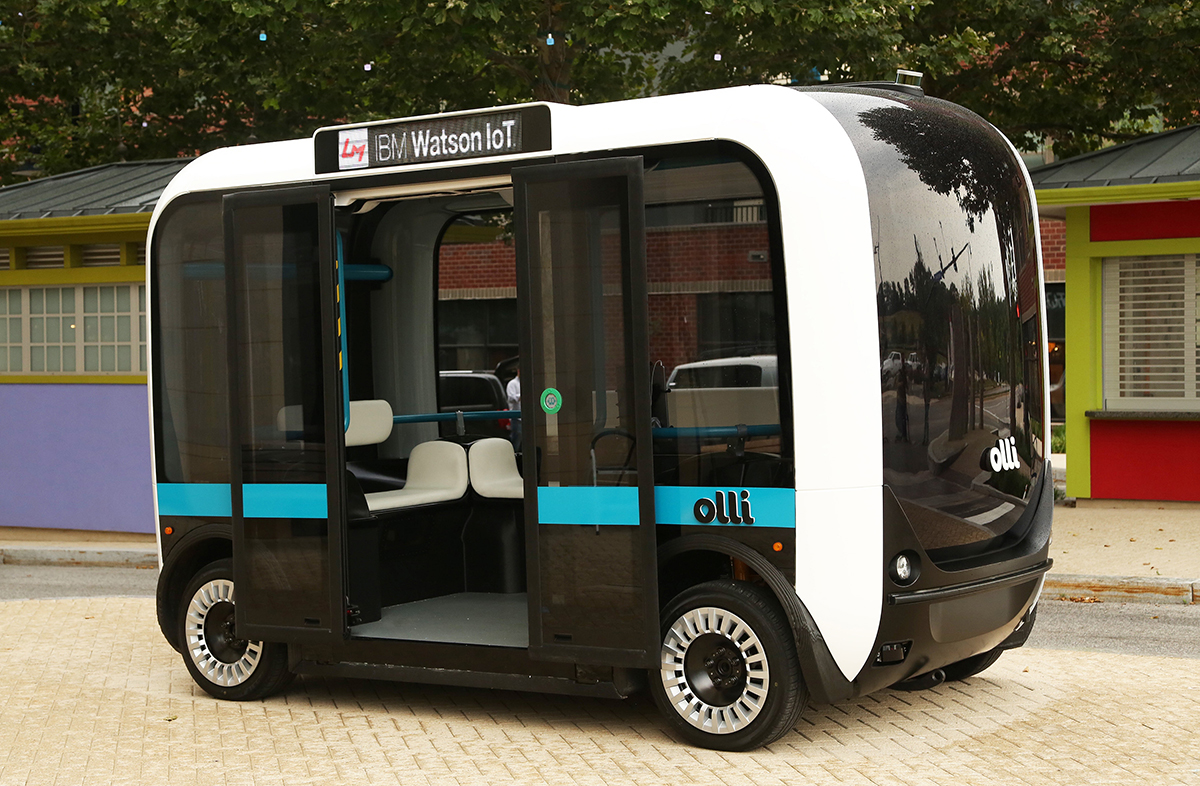The earned privilege of driving tethers us only as far as the road, fuel, and our physical and cognitive abilities can take us. And, we all know what waits for us on the horizon as we age – losing the freedom to safely operate a vehicle.
By teaming with the Consumer Technology Association (CTA) Foundation and Local Motors, IBM Accessibility Research hopes to advance the role technology can play in transportation by leveraging autonomous vehicles to help the growing aging population and people with disabilities remain self-sufficient for as long as possible and regain their independence.
Creating an accessible, autonomous vehicle
According to a report in The Journal of Gerontology, seniors are outliving their ability to drive safely by an average of 7 to 10 years, and when they stop getting behind the wheel they run the risk of social isolation. And, approximately 560,000 people with disabilities in the United States never leave home because of transportation difficulties, limiting access to employment opportunities and increasing dependence on caregivers.
To help everyone stay more connected with friends, family and their community, our goal is to create the world’s most accessible, autonomous vehicle. By leveraging the power of cognitive computing, the Internet of Things and accessibility technology, we aim to produce a self-driving vehicle that is personalized and adaptive to each person’s unique abilities – whether blind, deaf or in a wheelchair.
Olli, the first self-driving vehicle
The Local Motors Olli, the first self-driving cognitive vehicle, will serve as the foundation for this initiative, which is already equipped with some of the world’s most advanced vehicle technology, including IBM Watson Internet of Things (IoT) for Automotive. We want all passengers to be able to interact with Olli on their terms and receive information in the most consumable way so their experience is more pleasant, comfortable, intuitive and interactive as they journey in an autonomous vehicle.
Think about how a vehicle could make automatic adjustments for someone who is using a wheelchair, cane or other device. Or, if a person who is deaf could communicate easily with Olli by using sign language and Olli could respond with a text to their phone. Or, Olli could simplify its communication for someone with a cognitive disability to increase comprehension. We’re excited by the possibilities of this journey.
Workshops and hackathons
To get started identifying new innovations in accessible transportation, IBM, CTA Foundation, and Local Motors will also be launching a series of workshops and hackathons that will take place throughout 2017. We will leverage innovative thinking from people of all ages, backgrounds and abilities, including students from Carver Vocational-Technical High, a P-TECH school in Baltimore, Girls Who Code, universities, and the AARP, among others.
We encourage everyone to get involved and share their thoughts via Twitter on other ways of instrumenting a vehicle to be more accessible to people of all abilities. Please use #AccessibleOlli and post your thoughts.
Creating technology solutions
IBM has been committed to developing accessibility technology solutions to help people with disabilities for more than 100 years. IBM is also focused on helping the world’s growing aging population by leveraging sensors, robotic assistants, the Internet of Things, and other cognitive-powered technologies to provide clinicians and caregivers with insights that could help them make better care decisions. We have opened a new “Aging in Place” environment in our ThinkLab in Austin designed to mimic the types of interactions elders may have in their homes.
And now, by extending our work with the CTA Foundation and Local Motors we can further advance the role technology plays in helping the aging population and people with disabilities be more mobile and enrich their quality of life.
